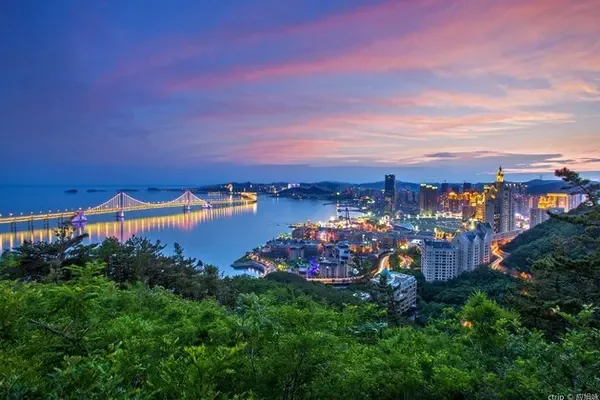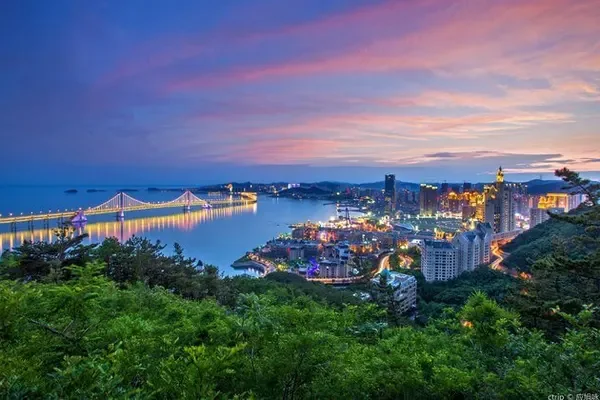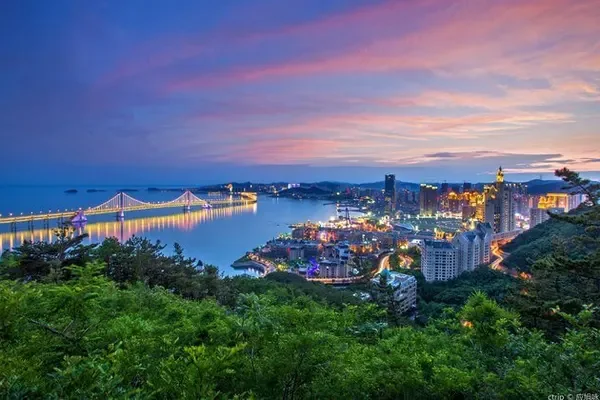
I'm sorry Zhihua Temple, we came to the wrong place
"When the car turned into Jinbao Street, I felt something was wrong...we came to the wrong place." On a sunny morning, when I walked into Lumicang Hutong and finally arrived at the gate of Zhihua Temple, my friend saw My first sentence took me by surprise. It turned out that we mistakenly took Zhihua Temple as Zhizhu Temple. The original intention was to visit Songzhu Temple and Zhizhu Temple. These two temples are connected together and have been neighbors for many years. Because a friend said that she had been to Zhizhu Temple twice a few years ago, there was a very good French restaurant inside, one time was to attend a friend’s birthday party, and the other time was to be interviewed by a fashion magazine. I like wooden buildings very much, and I miss them very much. I want to invite me to visit them together. But after all, it has been a long time, and this one-word difference made us finally meet Zhihua Temple.
They come, the security. We decided to make the mistake, bought the tickets, and visited the Zhihua Temple in front of us. I think it must be due to fate. Under the flowers in front of this hall, I met a garden full of lilacs, a magnolia tree, and the intangible cultural heritage "Beijing Music" performance that lingered for a long time in the hall. You see, everything in this world is born of fate and harmony. There is really no need to deliberately evade or lament in vain. Just be calm and calm, and you will surely reap surprises. If it is not complete, it means that it is not the end yet, so what is the rush? Walk slowly, look slowly, you must be smiling.

Zhihua Temple

Zhihua Temple

Zhihua Temple

Zhihua Temple

Zhihua Temple

Zhihua Temple Past and Present of Zhihua Temple
To uncover the many surprises, we must first start with the past and present of Zhihua Temple. From the introduction in the temple, we know that this temple is a relic of the Ming Dynasty and is more than five hundred years old. According to historical records, Zhihua Temple was built in the ninth year of Zhengtong in the Ming Dynasty, that is, in 1444 AD. Calculated, it is only 24 years younger than the Forbidden City, and it is the same generation as the Imperial Palace. What's more interesting is that this temple is actually the family temple of Wang Zhen, the eunuch who was favored by Emperor Yingzong of Ming Dynasty! Friends who are familiar with the history of the Ming Dynasty must have some understanding of the eunuch's monopoly power in the Ming Dynasty. The family temple of an eunuch can be as large as covering an area of 20,000 square meters in the prosperous period, which is really amazing! This temple has five front and rear courtyards, divided into east, middle and west roads. It can be regarded as a prominent large temple in the eastern part of the imperial city at that time. Today's Zhihua Temple, the main building left on the central axis is basically complete, with four-entry halls, which can be called the most complete Ming Dynasty wooden structure complex in Beijing's Sijiu City. In addition, there are many precious statues, Buddhist scriptures, murals, music and other remains in the temple. From the inside to the outside, how rich and full it constitutes a pure land of Zen forest. Therefore, in 1961, Zhihua Temple was designated as the first batch of national key cultural relics protection units. In 1986, the State Administration of Cultural Heritage allocated funds to completely renovate Zhihua Temple, and then established the Beijing Cultural and Museum Exchange Hall here. This ancient temple was given the mission of the new era.

Zhihua Temple

Zhihua Temple

Zhihua Temple

Zhihua Temple Wrong and Wrong Surprise
"Laozi" said: Misfortune comes from blessings. In many cases, "a poor man loses his horse" can be regarded as a kind of wisdom and open-mindedness. This visit to Zhihua Temple was really a surprise. Stepping into the gate of the temple, in front of the bell tower and the drum tower, a lilac tree and a white lilac tree instantly come into view—planted at that time, and blooming at this time, a flower blooming that lasted nearly six hundred years to see the Buddha . These two lilac trees have thick and sinuous branches. Those bones and interstitial structures record the success or failure of generations. Respect the Dharma and protect future generations. The people who used to build temples left one by one, and the rankings in the family temples became more and more one after another. The vicissitudes of life and the passage of time, only these temple trees have always walked side by side with Buddhism and time. From the perspective of human life span, temples, cloves, Buddhism, and time are all eternal.
While taking pictures among the flowers under the tree, I met an old man who guided us to the back hall to listen to music. The old man is enthusiastic and confident, and his speech is full of Beijing accent. He claims to be an old resident of Lumicang Hutong. He has been with this temple for many years. He walks in the temple every day to bask in the sun and chat with tourists. After thanking the old man, we walked towards the apse, wondering what kind of music we would hear.
There are two rows of wooden benches in the main hall, lined up from east to west, parallel to the central axis. We and some other tourists, a total of more than a dozen people, sat down one after another, waiting for the good news. About two or three minutes later, a group of performers dressed in yellow robes and hats and holding various folk instruments filed in. Facing north and south, they lined up and prepared to start playing. Before the performance, one of the representatives got up and introduced the content and origin of this mini recital to the audience.
It turns out that the "Jing Music" of Zhihua Temple is a "living fossil" of national intangible cultural heritage! This is a folk sheng wind music that spread in the Beijing area during the Ming and Qing Dynasties. It is said that it originated from the court of the Ming Dynasty and was passed down from generation to generation by the art monks of Zhihua Temple. It has a history of nearly 600 years. Today, these performers are no longer monks, but folk artists, and they are all contributing their own strength to the inheritance and promotion of intangible cultural heritage. Observing these musical instruments carefully, pipes, flutes, sheng, gongs, drums, cymbals, cymbals... especially the nine-hole pipe and the seventeen-reed sheng retain the Tang Dynasty in terms of shape, structure, sound hole spectrum, and instrument pitch. The Legacy of Song Jiaofang Music. The simple and elegant "Beijing music" performed by the performers is melodious and deep, winding around the beams. It is full of the rise and fall of the palace, Buddhism and Zen music, and various folk styles. The listeners seem to follow the melody and ethereal melody Travel back to the Beijing city six hundred years ago.
The music fades away and lingers on. After the recital, we took a closer look at the exquisite furnishings in the main hall, and then met the enthusiastic old man again in the courtyard, and he guided us to enter another hall to see the national treasure in the Tathagata Hall—the golden silk Phoebe Buddha statues, thousand Buddha niches, murals, and precious ceiling caissons that have been partially lost overseas. The old man raised his hand and pointed, and said with glory on his face: Even the old locust tree outside the Tathagata Hall is six hundred years old.
At this moment, I looked around my surroundings, and calmed down to listen to those rustling and whispering whispers. All the remnants in this temple are silently telling the past in time. They will continue to narrate the accumulated yesterday, shallowly, faintly, I can hear it clearly, but it is like in Wang Wei's poem: no people are seen in the empty mountain, but people's voices are heard. Life is amazing, we talk about it every day and say a lot, but in the end only creation lasts forever. There are not many words about good things, but every inch of their existence has already become an immortal long poem.

Zhihua Temple

Zhihua Temple

Zhihua Temple

Zhihua Temple

Zhihua Temple

Zhihua Temple

Zhihua Temple

Zhihua Temple

Zhihua Temple

Zhihua Temple

Zhihua Temple

Zhihua Temple life cracks, bathing in sunshine and rain
I am really grateful for this "wrong visit", which once again filled in several gaps and ignorance in my life experience. Life is like an ocean. If you fill it with awareness bit by bit, as time goes by, that ocean will eventually become an ocean of wisdom, filled with infinite tenderness and compassion, ready for use and nourishment at any time. Looking back at the Zhihua Temple behind us, how could we have met so much joy and preciousness without today's "wrong visit". Even if the creation is still the same, if the season is wrong, it will not meet this ancient lilac temple. Be assured that awareness and willingness always bring good luck. If there is no crack in life, how can the sun shine in?

Zhihua Temple

Accommodation: Unnamed Courtyard Hotel
Comments: In Baochao Hutong in Nanluoguxiang, it is a joy to revisit the old place! In the summer vacation of 2012, I took my children to travel to Beijing and stayed in Weiming, an official residence courtyard. The theme of ancient musical instruments is very popular with the whole family. The stay is comfortable, the breakfast is simple but exquisite and warm, it is the taste of home made by the hotel aunt. Quaint courtyard hotel, very inviting.








